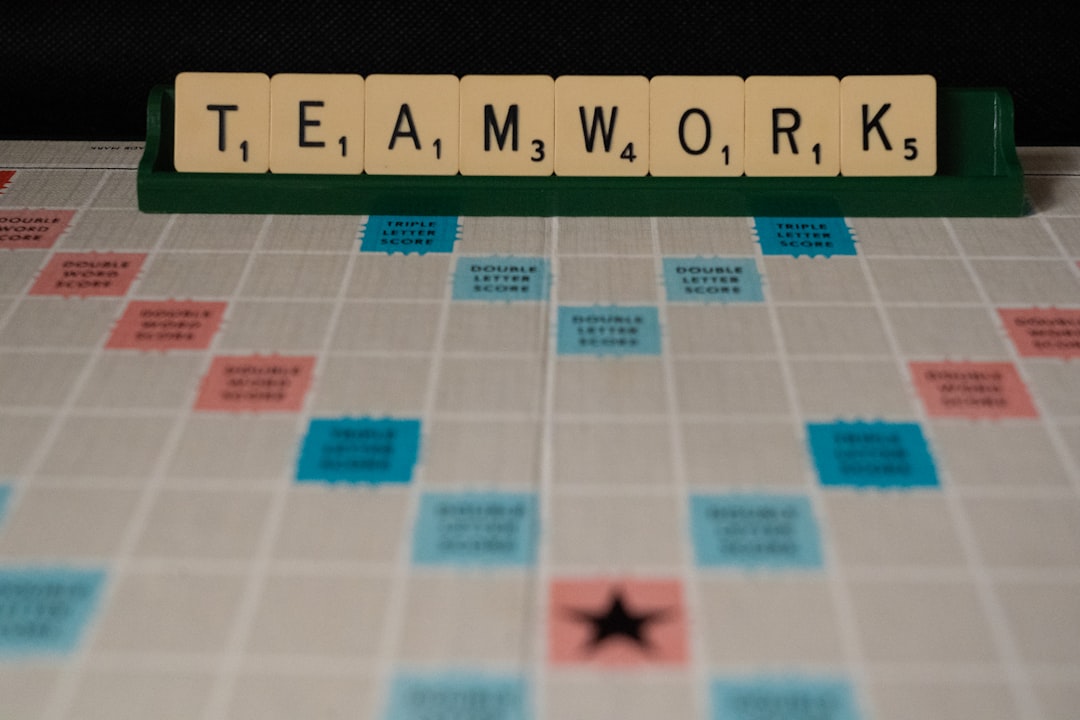Balancing Focus And Flexibility In A Borderless Work Environment

Introduction
The modern workplace no longer fits inside a single office building or a fixed schedule. Teams are spread across continents, collaborators join from different cultures, and technology makes it possible to deliver results from any corner of the globe. In this borderless environment the most valuable assets are not physical desks or 9‑to‑5 routines, but the ability to maintain deep focus while staying flexible enough to adapt to shifting priorities, unexpected meetings, and the ever‑changing rhythm of global time zones.
Balancing focus and flexibility is not a paradox; it is a skill that can be cultivated with the right mindset, tools, and processes. This article explores why both elements matter, how they intersect, and what practical steps individuals and leaders can take to create a productive, resilient remote work culture that thrives across time zones.
Understanding the Borderless Landscape
The shift from location‑based to outcome‑based work
Traditional workplaces measured productivity by hours logged at a desk. In a borderless setting the metric shifts to outcomes delivered, regardless of where or when the work happens. This shift encourages autonomy, but it also removes the natural anchors that an office provides—such as a shared lunch break or a daily commute that signals the start and end of the day. Without those anchors, workers must create their own structures for focus and recovery.
The time‑zone mosaic
When a team spans three or more time zones, the workday becomes a mosaic rather than a single block of time. Overlap windows may be short, and the “core hours” concept often needs to be re‑imagined. People may find themselves collaborating early in the morning, late at night, or during unconventional hours to keep projects moving. The challenge is to protect periods of uninterrupted concentration while still being available when teammates need input.
Cultural expectations and communication styles
Different regions bring varied expectations about response times, availability, and work‑life boundaries. In some cultures, immediate replies are seen as a sign of commitment; in others, respecting personal time is paramount. Recognizing and negotiating these expectations is essential for preventing burnout and for maintaining a respectful, high‑performing team.
Why Focus Remains Critical
Deep work drives high‑impact results
Research shows that periods of uninterrupted, cognitively demanding work—often called “deep work”—produce higher quality outcomes than fragmented multitasking. In a borderless environment, deep work allows individuals to make progress on complex tasks without being constantly pulled into reactive meetings or chat notifications.
Protecting mental bandwidth
When the line between work and personal life blurs, mental fatigue can set in quickly. Scheduled focus blocks act as a buffer, giving the brain a predictable rhythm. This predictability reduces decision fatigue and helps maintain energy throughout the day.
Building trust through delivery
When remote contributors consistently deliver high‑quality work on time, they earn trust from peers and leaders. Trust reduces the need for micromanagement, allowing teams to operate with greater flexibility and less oversight.
The Necessity of Flexibility
Responding to real‑time changes
Projects rarely follow a linear path. New client requirements, sudden market shifts, or technical roadblocks can demand immediate attention. Flexibility enables teams to pivot quickly, reallocate resources, and keep momentum without being shackled to rigid schedules.
Accommodating personal rhythms
People have different peak productivity periods. Some thrive early in the morning, others find their flow late at night. Allowing individuals to work when they are most alert maximizes output and supports well‑being.
Enabling cross‑time‑zone collaboration
Flexibility is the glue that holds distributed teams together. It means being willing to attend a short sync outside of normal hours when necessary, and also respecting the need for downtime when a colleague is offline. The balance of give and take creates a collaborative culture that feels fair to all participants.
Tools That Enable Both Focus and Flexibility
Asynchronous communication platforms
Tools such as Slack, Microsoft Teams, or Mattermost allow messages to be read and responded to at the recipient’s convenience. By setting clear expectations—e.g., using “#focus‑time” tags or status indicators—team members can signal when they are in deep work and when they are open to quick questions.
Project management boards
Kanban boards (Trello, Jira, ClickUp) visualize work items, deadlines, and dependencies without requiring constant status meetings. When everyone can see what is in progress, they can plan their own focus blocks around tasks that need attention, while still staying aligned with the overall timeline.
Calendar coordination utilities
World‑time‑zone calendar tools (Calendly, Clockwise, Google Calendar’s “Find a time” feature) help identify overlap windows and automatically suggest meeting slots that minimize disruption to focus periods. Integrating these tools with personal calendars ensures that scheduled meetings do not encroach on pre‑planned deep work.
Time‑tracking and analytics
Applications such as Toggl, RescueTime, or Hubstaff provide insight into how time is spent across activities. By reviewing these reports, individuals can see where distractions occur and adjust their routines to protect focus windows.
Noise‑cancelling and ambient sound apps
Physical focus can be enhanced with hardware (noise‑cancelling headphones) and software (Noisli, Brain.fm) that block ambient distractions or provide background soundscapes conducive to concentration.
Strategies for Balancing Focus and Flexibility
Define personal “focus zones”
Identify the times of day when you are naturally most alert. Block these periods on your calendar as “focus time” and share the status with your team. Use visual cues such as a distinct calendar color or a status message that reads “In focus mode—please ping only for urgent matters.”
Adopt a “time‑boxing” routine
Allocate specific time blocks for different types of work—deep work, collaborative tasks, email triage, and breaks. For example, a typical day could include two 90‑minute deep‑work slots, a 30‑minute window for responding to messages, and a 45‑minute slot for meetings. By pre‑defining the purpose of each block, you reduce the temptation to let ad‑hoc requests spill into focus periods.
Leverage the “core‑hours” concept wisely
Instead of forcing a uniform 9‑to‑5 window, define a flexible core period (e.g., 2‑hour overlap) where all team members are expected to be reachable. Outside of this window, individuals can work according to their own rhythms. This approach respects time‑zone differences while still providing a reliable window for real‑time collaboration.
Use “status tags” consistently
Agree on a set of status tags that communicate availability at a glance. Common tags include “Deep focus,” “Available for quick chat,” “In a meeting,” and “Offline.” Encourage teammates to update their status when they move between zones, and avoid assuming availability without checking.
Batch communication
Instead of replying to messages the moment they arrive, set aside specific intervals (e.g., every two hours) to process inboxes and chat channels. This batching reduces context switching and preserves the flow of deep work.
Practice “structured async updates”
Replace daily stand‑up meetings with brief written updates posted in a shared channel or project board. Each team member can answer three questions—what they accomplished yesterday, what they plan today, and any blockers. This format keeps everyone informed without requiring synchronous presence.
Build “buffer days” into sprint cycles
When planning two‑week sprints, allocate a half‑day at the beginning and end of the cycle for planning, review, and unexpected work. These buffers protect the main work period from being derailed by last‑minute changes, allowing focus to remain intact.
Managing Work Across Time Zones
Map the overlap matrix
Create a visual map that shows the working hours of each region in a 24‑hour format. Highlight the common overlap zones and note the best times for live collaboration. This map can be a simple spreadsheet or a shared graphic that everyone can reference.
Rotate meeting times
If recurring meetings are required, rotate the meeting time every few weeks so that the burden of early‑morning or late‑evening attendance is shared equitably among participants. Document the rotation schedule and communicate it well in advance.
Set clear expectations for response times
Define what constitutes an “urgent” request versus a “normal” inquiry. For instance, urgent matters may require a response within two hours, while normal messages can be answered within a business day. Publish these guidelines in a team handbook and reinforce them during onboarding.
Use “follow‑the‑sun” hand‑off patterns
For projects that require continuous progress, establish a hand‑off protocol where one region completes its workday by documenting status, next steps, and any pending decisions. The receiving region then picks up the task, ensuring smooth continuity without sacrificing focus.
Respect cultural work‑life norms
Research the local holidays, typical working hours, and vacation practices of each region. Avoid scheduling meetings during national holidays or after typical working hours unless absolutely necessary, and always provide alternative ways to catch up on missed discussions.
Communication Practices That Preserve Focus
Keep meetings purpose‑driven
Every meeting should have a clear agenda, desired outcome, and a designated time limit. Distribute the agenda at least 24 hours in advance so participants can prepare and decide whether their presence is essential.
Adopt “no‑meeting” days
Designate one or two days per week as meeting‑free for each team or the entire organization. These days become dedicated focus periods where employees can work uninterrupted. Communicate the schedule clearly and respect it across time zones.
Encourage concise written communication
When reaching out asynchronously, use brief, structured messages that state the purpose, required action, and deadline. Include bullet points for clarity and avoid long narrative paragraphs that can be misread or ignored.
Leverage “read receipts” wisely
Some platforms offer read receipts that can create pressure to respond instantly. Encourage the team to treat read receipts as optional signals, and remind members that it is acceptable to read a message and respond later during a designated focus block.
Personal Rituals for Sustainable Productivity
Start the day with a “mindful reset”
Spend five minutes reviewing the day’s priorities, setting intentions for focus zones, and visualizing successful completion of key tasks. This ritual creates mental clarity before diving into work.
Use the Pomodoro technique with a twist
Traditional Pomodoro (25 minutes work, 5 minutes break) works well for many, but in a borderless environment you may need longer focus intervals to accommodate deep work. Experiment with 50‑minute work blocks followed by a 10‑minute break, adjusting the length to match your natural attention span.
Incorporate micro‑movement breaks
Every hour, stand, stretch, or take a short walk. Physical movement restores circulation, reduces eye strain, and refreshes mental energy, making it easier to return to focus after a break.
End the day with a “shutdown routine”
Close all work‑related applications, update your task board, and write a brief note on what you will tackle tomorrow. This ritual signals the brain that work is finished, helping to transition into personal time.
Leadership Guidance for Balancing Focus and Flexibility
Model the behavior
Leaders who openly set focus blocks, respect status tags, and avoid sending after‑hours messages create a cultural norm that others feel comfortable following.
Provide clear policies
Document expectations around core hours, response times, meeting scheduling, and after‑hours communication. Make these policies accessible and revisit them regularly based on feedback.
Invest in training
Offer workshops on time‑boxing, asynchronous communication, and effective use of collaboration tools. Equip managers with techniques to coach their teams on balancing deep work with necessary flexibility.
Monitor workload health
Use analytics from time‑tracking tools to detect signs of over‑extension, such as consistently long work hours or frequent after‑hours messages. Intervene early by redistributing tasks or encouraging rest.
Celebrate outcomes, not hours
Reward teams based on delivered value, meeting milestones, and quality of work rather than the number of hours logged. This shift reinforces the importance of focus and results over mere presence.
Common Pitfalls and How to Avoid Them
Mistaking busyness for productivity
When every hour is filled with meetings and chat, it can feel like progress is being made, but real output may suffer. Periodically audit your calendar to ensure a healthy ratio of focused work versus collaborative time.
Ignoring time‑zone fatigue
Constantly accommodating others’ schedules without protecting your own rhythm can lead to chronic fatigue. Set a personal limit on how many early‑morning or late‑evening meetings you accept each week.
Over‑reliance on synchronous communication
While real‑time conversations are valuable, they can become the default mode, eroding focus. Encourage asynchronous alternatives wherever possible, especially for updates that do not require immediate feedback.
Neglecting personal boundaries
Working from home blurs the line between professional and personal spaces. Define a dedicated workspace, establish clear start and end times, and communicate these boundaries to teammates.
Failing to document decisions
In asynchronous environments, decisions made in quick chat exchanges can be lost. Create a habit of summarizing key decisions in a shared document or project board to maintain a single source of truth.
Future Trends Shaping Focus and Flexibility
AI‑driven scheduling assistants
Emerging tools can automatically propose meeting times that minimize disruption to focus zones, suggest optimal work blocks based on personal productivity patterns, and even draft concise meeting agendas.
Distributed “digital twins” for project tracking
Digital representations of workstreams that update in real time allow teams to see progress without needing frequent status meetings, freeing more time for deep work.
Adaptive work‑hour policies
Companies are experimenting with policies that dynamically adjust core‑hour windows based on project phases, allowing greater flexibility during high‑focus periods and more collaboration during launch phases.
Enhanced well‑being analytics
Future platforms will integrate biometric data (with consent) to provide insights on stress levels, sleep quality, and focus capacity, helping individuals and managers fine‑tune work rhythms.
Conclusion
Balancing focus and flexibility in a borderless work environment is both an art and a science. It requires intentional design of personal routines, thoughtful use of technology, clear communication norms, and supportive leadership. By protecting deep‑work zones, embracing asynchronous collaboration, respecting time‑zone differences, and continuously iterating on processes, remote teams can achieve high‑impact results without sacrificing well‑being.
The journey begins with small, measurable changes: setting a status tag, blocking a focus window, or rotating a meeting time. As these practices become ingrained, the organization builds a culture where productivity is defined by outcomes, not by the number of hours logged, and where every team member can thrive, no matter where they are located.
Random Posts

Best Places to Work Anywhere and the Gear That Powers You
Discover top remote work hotspots from Bali cafés to Colorado cabins and the essential gear that keeps you fast, comfy and connected wherever you set up shop.
2 weeks ago

Thriving on the Move Nutrition Strategies for Digital Nomads
Learn practical nutrition hacks for digital nomads, how to source fresh food, sync meals with shifting time zones, and turn eating into a productivity boost wherever you work.
2 months ago

Nomad Accommodation Secrets Finding Home Anywhere
Treat each stay as a flexible tool: ask what minimum you need to stay productive, how much budget you can spend, and which culture or lifestyle you seek. Align these three questions to turn chaos into a clear home-anywhere plan.
2 months ago

Offshore Strategies and Legal Hacks for Modern Nomads
Learn how modern nomads can protect assets, cut tax leakage and stay compliant by using offshore structures, smart residency planning, travel-proof banking, and legal hacks, all in one clear roadmap.
3 weeks ago

Top Coastal Havens for Digital Nomads with Affordable Flights
Discover budget-friendly beach cities where cheap flights, low living costs and strong WiFi let digital nomads work and play by the sea without breaking the bank.
2 weeks ago
Latest Posts

Essential Software Every Remote Professional Should Use
Master remote work with essential tools: instant messaging like Slack, high definition video calls such as Zoom, and asynchronous voice apps. Streamline communication, stay connected and boost productivity.
1 day ago

Mastering Remote Work Productivity for Digital Nomads and Freelancers
Learn proven habits, tools, and tactics that help digital nomads and freelancers stay focused, deliver quality work, and maintain a sustainable lifestyle while traveling the world.
1 day ago

Tech‑Friendly European Towns Perfect for Remote Living
Discover Europe’s best small towns where fast internet, affordable living and vibrant tech communities let you work remotely while soaking up historic charm, lakeside views or mountain air.
1 day ago